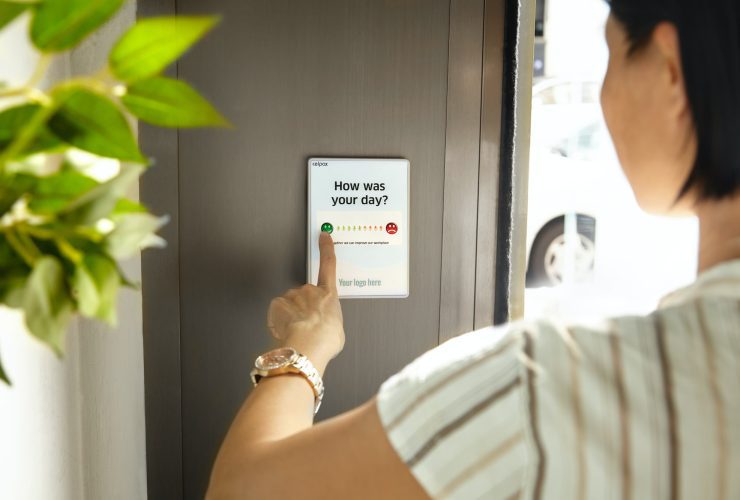Why Your Website Needs to be FAST
Having a pretty practice website isn’t enough. These days, if your website isn’t blazingly fast, you’ll lose potential patients…and Google won’t be happy, either. In this episode, we learn why speed is one of the most important investments you can make in your practice.
Episode Transcript
Have your ever clicked on a link and then abandoned the page shortly after because the website took too long to load? It’s an experience most of us have had. The problem is, if it’s an experience your patients are having, it’s probably costing you revenue.
Hey, what’s up everybody, and welcome to the Medical Marketing Podcast from Messenger – the show where we give you actionable tips and advice to help improve your practice marketing, grow revenue, and take patient experience to the next level. I’m your host, Crawford Ifland, and today we’re going to be talking about website speed and how it’s affecting your revenue and search engine rankings.
Why is speed important?
Today’s patients want fast experiences online, especially on their smartphones.
We noted in past episodes that nowadays, most patients are now searching for health information on their mobile devices. Assuming your website is responsive and mobile-friendly, that’s great – you’re already ahead of those whose websites don’t look good on smartphones.
But looking good is only part of the puzzle…you also have to perform well. This is where mobile phones actually produce a problem.
You see, mobile networks aren’t as reliable as a good old-fashioned Wi-Fi connection. When you’re at home or at work and on Wi-Fi, your connection and speeds are usually pretty stable. However, on a mobile connection, depending on how strong your signal is, your speed could be quite fast…but it could also be mind-numbingly slow.
5G is coming, and this will definitely help with website load times, but it’s not here yet…so in the meantime, it’s crucial to make your website as fast as possible.
If your practice website is slow to begin with, a poor cell connection definitely isn’t doing you any favors. In fact, it’s probably costing you revenue – we’ll talk about this in a minute. But for now, here are some facts and stats on why website speed is so important:
- 53% of internet users will abandon a website if it doesn’t load everything that should be visible within 3 seconds (source)
- Amazon performed a study on their own website and found out that for every 100ms increase in page load time – keep in mind, that’s 0.1 seconds – their sales dropped by 1%. When Amazon took this number and applied it to yearly sales, they found that an extra 1 second in load time would cost them $1.6 billion in sales every year. (source)
So, as you can see, website load time is super important.
This has to do with bounce rates. The bounce rate of a website is the percentage of users who leave without clicking around to any other page. And, as I’m sure you probably guessed, bounce rates increase the longer it takes your website to load: if your website takes up to 3 seconds to load, an estimated 3 out of 10 patients will leave without ever interacting. That’s a high number, but it gets worse: if it takes 5 seconds to for your website to load load, that number goes up to 9 out of 10. Think about that for a second: 9 out of 10 patients won’t take any action whatsoever. They won’t schedule an appointment or call your office. They won’t browse your services or learn more about you. They’ll just leave.
And it’s not just about patient experience: speed now affects how you rank on Google, too. Speed has been one of Google’s ranking factors for desktop searches since 2010, but starting in July 2018, Google made page speed an official factor in how they rank websites for mobile searches. It used to not matter as much if your website was slow, but nowadays, with the majority of traffic coming from mobile devices, you’re actually at risk of dropping in Google’s results with a slow website – and that means fewer patients.
Website load time also affects your online advertising, at least on Google. This is because “landing page experience” is a factor in your quality scores. If you aren’t familiar with Google’s quality scores, the basic idea is this: the higher your quality score, the lower you need to bid on certain keywords. So, if your “landing page experience” is bad because it takes too long for a page to load, that translates into a lower quality score…and lower quality scores translate into you having to pay higher prices in order to attract the clicks.
So, to recap, a slow website does the following very, very bad things:
- It reduces the number of leads coming in from your website, because your prospective patients are leaving;
- It hinders the ability of new patients to find you on Google and gives your competitors a change to rank higher than you and steal away business; and
- It makes your digital advertising more expensive, because you have to set higher bids in order to attract the clicks.
You can’t control how patients are going to interact with your website, how they find you, or where they might be when they decide to look you up. But regardless of how they find you, you can control how well your website performs once they do. Therefore, you need to make sure that your website performs at top speed, all the time – no exceptions. But that begs the question: how fast is fast?
How Fast is Fast?
Well, we noted that most patients will abandon a website if it takes more than 3 seconds to load, so it seems like 3 seconds is the magic number.
But the easy answer here is: as fast as possible.
If you can get load time under 1 second, by all means, do it!
We noted Google and Amazon earlier. Google has said that they aim to deliver every page on their website in under a half a second…so if half a second is good enough for Google, it’s probably good enough for you.
So, 3 seconds or under is the magic number. But how can we get a website to load that quickly?
How Can I Make My Site Faster?
There are several tools you can use to make your website load faster.
The first step is to perform a test using a tool called PageSpeed Insights (it’s from Google). This will tell you how fast your website loads on desktop and mobile devices, and will give you actionable steps to take that can help make your site faster. That’s step #1.
To actually speed your website up, you’ll need to utilize some third party tools – here are some of our favorites.
If you have a blog on your website, consider utilizing AMP – Accelerated Mobile Pages. AMP is a new standard from Google that displays the content of an article, but strips out much of the formatting of the rest of the site and standardizes it, so many AMP pages look the same. The result is that the page load extremely quickly…and AMP is particularly good for ranking in Google’s News Feed…so if you have a blog on your website, make sure you’re using AMP.
Next up, consider installing a caching plugin, using a CDN (which stands for Content Delivery network), or both! Caching will help returning users load the page more quickly by storing some re-used elements on their computer. A CDN will efficiently serve assets to the user so that the website loads even more quickly, and it can help with website security and uptime, too. If your site is on WordPress, WP Rocket is one of our favorite caching plugins. As for CDNs, Cloudflare is the way to go. As always, we’ll have links to these services in the show notes.
You’ll also want to make sure that you’ve optimized images on your site. The goal is to make images as small as humanly possible without sacrificing quality. Your website may have to load 20 images when a patient hits your homepage…if each image is full-sized at 2MB, that’s 40MB of data that the user has to load, on top of the rest of the code and text of the website! For reference, the average size of an optimized webpage that loads in under 3 seconds is around 3MB. There are a lot of tools that can optimize the images already on your site, but nothing beats properly resizing images before you upload them to your website in the first place.
Finally, get rid of as many plugins and external scripts as possible. These take time to load every time a user requests a new web page…and while some are necessary, it’s easy for a website to get “bloated” and load more than it really needs to. Content Management Systems like WordPress are notorious for this type of behavior, so if you’re on a CMS, go into the backend of your website and occasionally audit your plugins and scripts, and get rid of any that you don’t really need.
By doing all of these things, you should be able to cut your website load time down quite a bit. If you need help checking off any of the items on the list, reach out to your webmaster, or feel free to drop us a line – we’d love to help audit your site and make it as fast as it can be.
Next Week
Well, that’s all for today’s episode of the Medical Marketing Podcast. Join us again next week when we explore a somewhat controversial topic: should doctors blog?
As always, we’ll have a link to the show notes in the description, and be sure to check out www.messenger.md for more resources on how to improve your practice marketing, grow revenue, and take your patient experience to the next level. See you next week!







